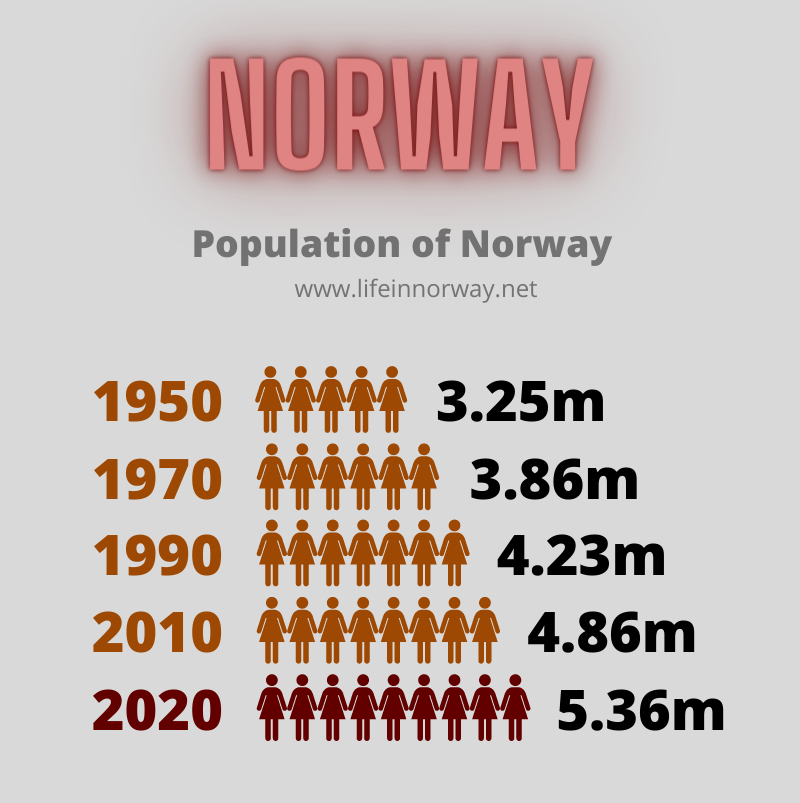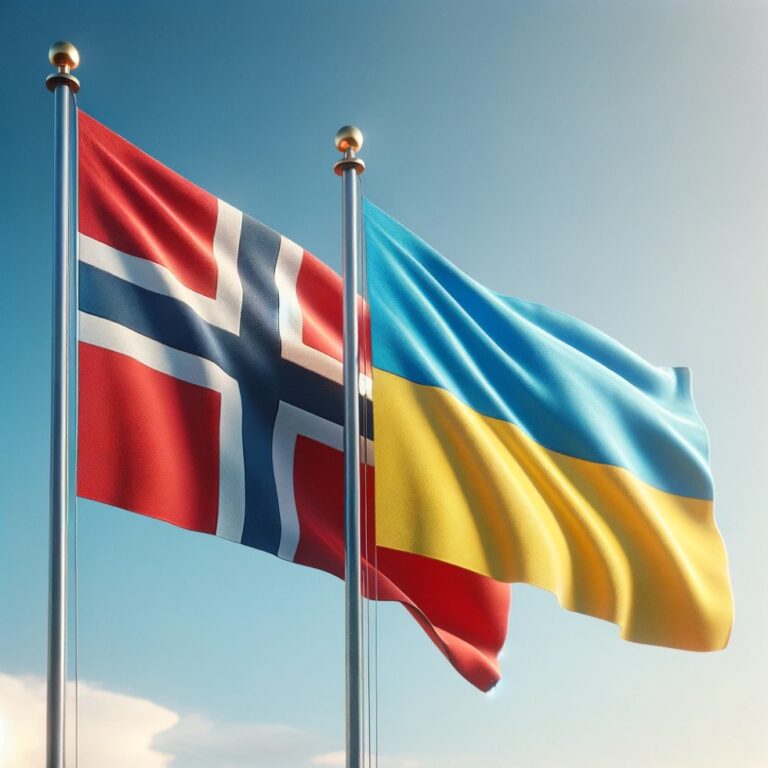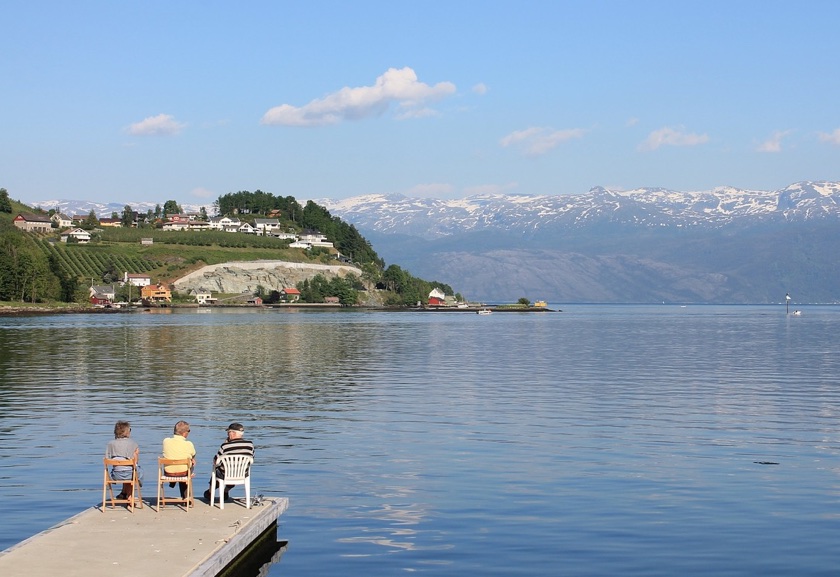Discover Norway in numbers: These are the statistics, facts, and figures that help to explain and provide context about Norwegian life, updated for 2024.
How many people live in Norway, and how many of them are from different countries? What is it about Norway that makes it a so-called “happy” place to live? These are just some of the questions we get on an almost daily basis.

Whether you're studying Scandinavia, researching an article or a paper about Norway, or just curious about the region, facts about Norway are an important thing to get right.
If that's what you're looking for, you're in the right place. Let's take a look at Norway in numbers.
Table of Contents
Statistics About Norway
Statistics, numbers and other information about Norwegian society are not generally that difficult to find. However, what's often missing is the context and/or interpretation.
A single number doesn't tell you very much. For example, what about an average annual salary for a specific job role of $100,000. Is that a lot? What if last year it was 10% higher? What if the salary remained stable but the cost of living jumped?
As you can see, there is so much context that has to be provided when we consider any statistics. That's why politicians from different parties can often use the same data to tell two very different stories!

So, this article seeks to present official stats sourced from several places–adding context where necessary–to give a fair overview of Norway. Are you ready? Then let's get going…
Norway Population Stats
As of Q3 2023, Norway's population is 5,533,582. Would you believe, that's an increase of more than two million people since 1950!
What caused such a drastic increase in the population of Norway? Well, in the years following World War II, a high birth rate drove an annual increase of approximately 1%.
During the 1980s the growth rate slowed. Since 2004, immigration played a major role in the increasing population, although this too has slowed since around 2012.
Projecting future population figures is a difficult job. Based on medium-level fertility, life expectancy and net immigration, it seems likely that population growth will continue over the next 40 years, but at a slower rate. The best estimate for Norway's population in 2050 is 6.3 million.

As with most other European countries, Norway has an economic challenge to deal with relating to the ageing population shift. Norway already has a relatively long life expectancy, especially for women. More on that later.
However, in 1950, around 8% of the population was aged 67 or over. Today, it's almost 15%. That figure is projected to grow to 18% by 2030 and to almost 23% by 2050.
The economic challenge is simple: how can a country deal with a growing population of pensioners while the proportion of taxpayers dwindles? Only time will tell.
Norway Immigration Stats
So, what role does immigration play in Norway's demographic breakdown today? As of 2023, there were 877,227 people living in Norway who were born elsewhere. In addition, there were 213,810 people who were born in Norway to immigrant parents.
In Oslo, approximately one-in-three of the city's population is an immigrant or has immigrant parents. A quarter of all Norway's immigrants (including children born to immigrant parents) live in Oslo. Discover more Oslo stats here.
As for the source country of immigration, there is an interesting mix of countries. The top three are all EU/EEA countries, which makes sense given the relative ease of immigration thanks to the freedom of movement laws that Norway abides by through its EEA membership.
Many of the other countries in the top ten have undergone serious conflict in recent years, with asylum being granted to many people.
The figures for 2024 are not yet available. But as of the beginning of 2023, the largest groups of immigrants in Norway were:
- Poland (107,442)
- Lithuania (42,450)
- Ukraine (36,803)
- Sweden (36,210)
- Syria (36,147)
- Somalia (27,811)
- Germany (26,433)
- Eritrea (24,676)
- Philippines (23,994)
- Iraq (23,356)
- Thailand (22,292)
Many of our readers are from the US and the UK. So for all those wondering, there are 16,181 UK citizens living in Norway, and 10,455 from the US.

The reason for the slowdown in net immigration has largely been a drop in labour-based immigration since 2011. However, the number of refugees has also dropped sharply since the European refugee crisis of 2015.
That slowdown has changed once again in the last couple of years, though. The Russian invasion of Ukraine has seen huge numbers of Ukranian nationals arrive in Norway in 2022 and 2023, with many more set to follow in 2024.
Stats on Family Life in Norway
The full figures for 2023 are still to be released, but in 2022, a total of 51,480 babies were born in Norway. Of those, 26,445 were male and 25,035 were female.
If you think that sounds low, you’d be right. At just 1.41, Norway’s fertility rate in 2022 was the lowest since records began.
The post-war baby boom hit its height in 1961. But after the early 1960s, the rate began to drop sharply. Since 2009, the fertility rate in Norway has dropped every single year, with just one exception.
The recent fall in birth rate is mirrored across the Nordic region, and in fact there are many European countries with an equally low or even lower fertility rate right now. These include Germany, Finland, Portugal, Italy and Spain.
An interesting related statistic is that the average age of a mother when giving birth is much older than it used to be. Since the 1970s, the average age has increased by around five years.
In 2020, the average age of first-time mothers was 29.9 years. First-time fathers were on average 32.1 years old. Compared with 2019, that's an increase of more than a month for both mothers and fathers.
Data shows that of the marriages registered in Norway, 39% will end in divorce. This is actually slightly less than it was in the early 2010s.
However, this drop may be due to the fact that less people are getting married. And of course, there is no data available on non-married cohabiting couples that split up.
Life Expectancy Stats in Norway
How long can a baby born in Norway today expect to live? That's what the life expectancy figures attempt to estimate. A newborn boy should live to 80.9 years, while a newborn girl should live to 84.3 years.
These numbers are slightly down on previous years, but still at some of their highest ever numbers. In the immediate post-war years, newborns would be expected to live to just 69.3 (boys) or 72.7 (girls).

During some periods in history, Norwegian women had the world's highest life expectancy. That's not the case today, although Norwegian women are still expected to live longer than women from many other European countries.
At 24%, cancer is the biggest cause of deaths in Norway, but Covid and cardiovascular disease deaths rose in 2022. Violent deaths–including accidents, suicides and murders–have remained relatively stable since the post-war years.
Working Life in Norway
Since 1972, the rate of men in the workforce has remained relatively stable, although there has been a slight decline since 2008. The number of women working has increased significantly since the 1970s, but has also declined slightly since 2008.
What has happened since 2008? One reason can be found in that the largest decline for both sexes was among the under 25s. This is linked to the increasing numbers of people taking higher education.
The total labour force numbers 2.9 million people. Women make up 47% of the workforce, but they do work shorter hours on average, as more work part-time. That being said, the number of women working full-time hours has increased from 47% in 1980 to 63% by 2018.
Norway's average annual wage for full-time work was NOK 634,700 in 2023. That’s an increase from 516,000 in 2015.
Driving and Transport Stats in Norway
The number of registered vehicles in Norway was 3.44 million in 2023. This figure includes vans, lorries and buses. Private cars account for 2.85 million of this figure.
Electric car stats in Norway
Norway is known as an electric car hotspot, and the stats show that's with good reason. In 2010, there were just a few thousand hybrid cars sold, with virtually no electric cars. Because of significant government incentives, that's totally changed.
The year 2023 saw another record for EV sales in Norway: 82.4% of all new cars sold were fully electric. That’s a big jump from 69.3% just one year before.
That means there are now more than 900,000 registered electric passenger cars and electric light commercial vehicles on the roads in Norway.
Crime in Norway
Norway is perceived as a safe country, but do the stats back that up? We've previously published an entire article about crime stats, so you'll find the full detail there. However, here's some interesting highlights.
Almost 50% of all offences that are fully investigated and closed remain unsolved. Approximately one-in-five offences result in a court prosecution, with the majority of these resulting in punishment.
However, less than 10% of offenders receive an unconditional prison sentence. To learn more, read more about Norway's prison system.
Around 30% of all offences are property thefts. This is a marked decline over a long period, most likely due to the increased use of home security systems and car alarms. However, there was a distrurbing jump in thefts in 2022 compared to 2021.
Drug offences have fallen from an all-time high of 47,300 in 2013 to 14,954 in 2022.
Sexual offences is one area of crime that has shown an increase. In 2018, more than 8,000 sexual offences were reported. There has been a long-term increase since the early 1980s, when the annual average had hovered around 1,000 for a few decades.
Murder remains relatively rare in Norway. During the whole of 2022, just 30 murders were committed. There were a further 82 charges of attempted murder.
Thanks for reading! Many of the stats used on this page are courtesy of the great work done by Statistics Norway. There's a lot more we plan to cover in the coming weeks. What Norway stats do you want to know?


Interesting read, thanks. Is there a breakdown on UK nationals?
I presume the increase in sexual offences stats can be related to overall women reporting crime more often nowadays. Back in the 50’s they were more likely to be shamed and not believed.
1,000 sexual offenses reported on average annually in the 80s. Mass immigration from the third world begins in 2004. 2018 over 8,000 sexual offenses reported . . . there must be a pattern here if only I could make it out!!!
Yes. The general acknowledgement and recognition of sexual assaults of women, and more recently the #metoo movement.
I understand you xenophobia wants to pin everything on immigrants, but by that logic it’s just as likely that the iPhone is the reason for the increase: “The original iPhone was launched in 2007. 2018 over 8,000 sexual offenses reported . . . there must be a pattern here if only I could make it out!!!”
There’s a simple answer to this: what is the race of the perpetrators of the 1000 offences vs that of the perpetrators of the 8000 offences?
But I suspect that data is not made readily available – and that’s the big issue here. It may (or may not – we don’t know) reveal that immigration is a driver of offences. Either way, we have to acknowledge that authorities are not neutral on this: they don’t want to risk stirring up racial tensions. Sadly that sometimes suppresses information that’s important for prevention of those crimes in the first place. There’s well-known precedent in the UK where reports on Asian grooming gangs – that could have prevented further offences – were not released because of fear of the “racial sensitivity” of the facts. The police forces in question have now admitted this.
None of this means that immigration is a driver of crime in Norway. But it could be. The big problem is this: data needs to be made public so people can act on the truth and sadly “progressive” authorities are bad at doing that. However much we’d all like the world to be one way, if the facts say otherwise, the answer isn’t to hide the facts.
Thank yolu.l am interested your nex articles ,and subjeck ts..
Does anyone know how many electric bicycles import to Norway in CY2020?